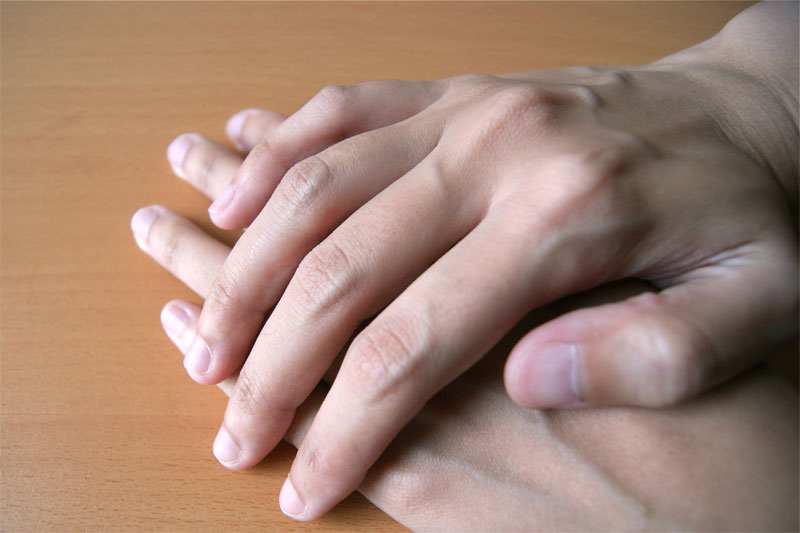 One of the five parts at the end of the hand, but usually not including the thumb.
One of the five parts at the end of the hand, but usually not including the thumb.
A finger is one of the hand’s appendages. Each finger consists of three finger bones or phalanges, while the thumb has two. These phalanges are connected via hinge joints, which are controlled by muscle tendons that allow the finger to flex (bend) and extend (straighten). These tendons are enveloped by synovial sheaths filled with fluid to minimize friction and facilitate muscle function. A tiny artery, vein, and nerve traverse each side of the finger. The entire construct is covered by skin and is capped with a nail at the end.
Injuries to the fingers, such as cuts, broken bones, and torn tendons, are quite common. One specific condition, known as Mallet finger, happens when a strike to the fingertip causes the extensor tendon on the finger’s backside to be dislodged from its attachment.
Infections can develop in the soft tissue at the tip of the finger, and paronychia, an infection of the tissue surrounding a nail, may occasionally occur after a minor incision.
Rheumatoid arthritis or osteoarthritis can result in inflammation that impacts the finger joints, leading to stiffness, pain, swelling, and malformation. Furthermore, the flexor tendons, which are located on the anterior part of the fingers, could experience inflammation and become trapped in the tendon sheath, resulting in a condition known as trigger finger.
Raynaud’s disease may be caused by changes in the regulation of muscles within the blood vessel walls and reduced blood flow to the hands and fingers. Dactylitis, a condition characterized by finger swelling that resembles a spindle, is often associated with sickle-cell anemia. Additionally, although uncommon, finger swelling can be a symptom of tuberculosis and syphilis.
Finger clubbing is often indicative of chronic lung disease or specific types of congenital heart disease. Although rare, finger tumors can manifest in conditions like chondromatosis, characterized by the presence of multiple benign cartilage tumors.
Congenital disorders related to the fingers encompass conditions such as syndactyly, which is the fusion of fingers, polydactyly, denoting the presence of extra fingers, and the absence of fingers. Another condition is the webbed appearance of the hand, which is the result of a deep membrane existing between the fingers.
